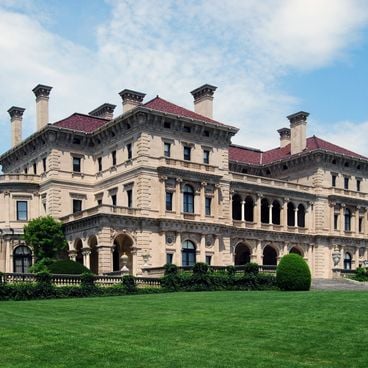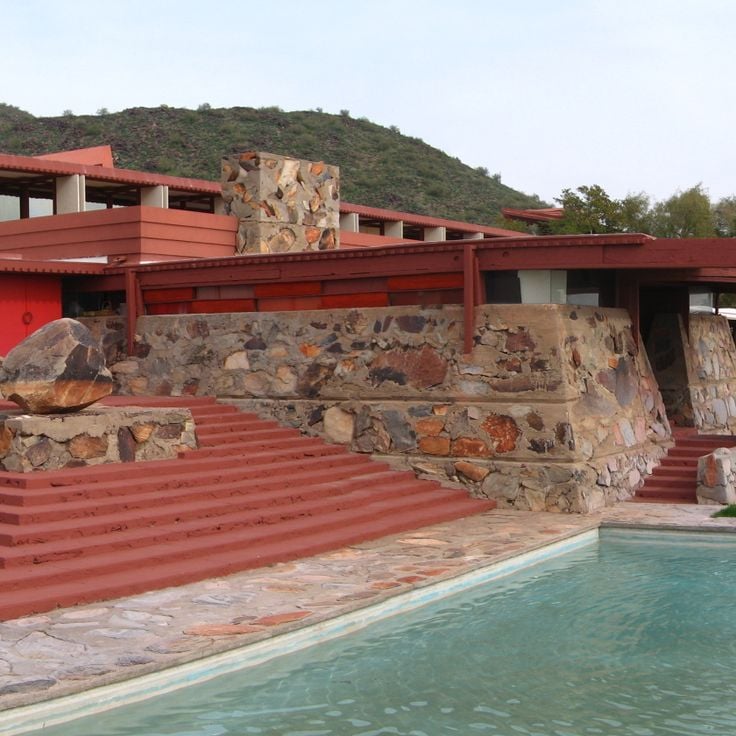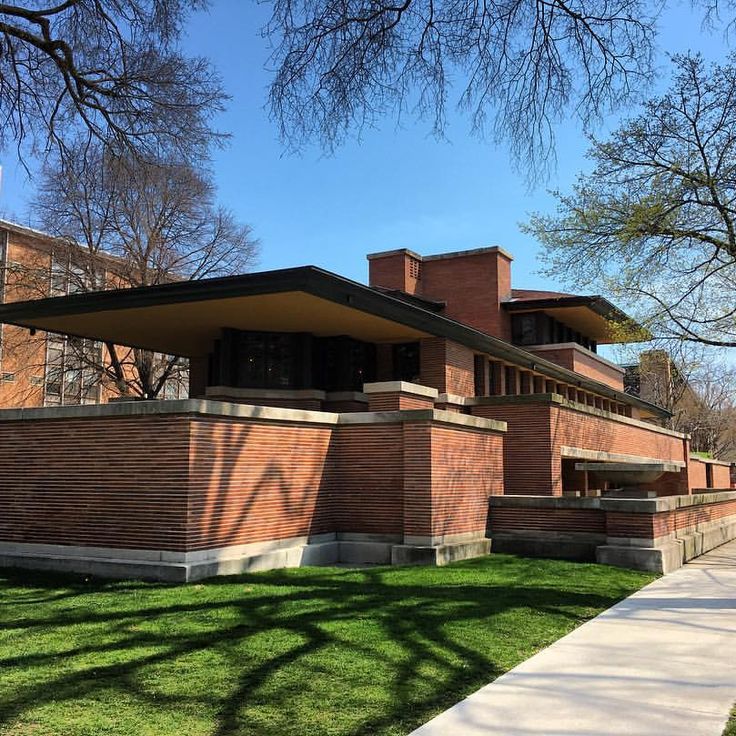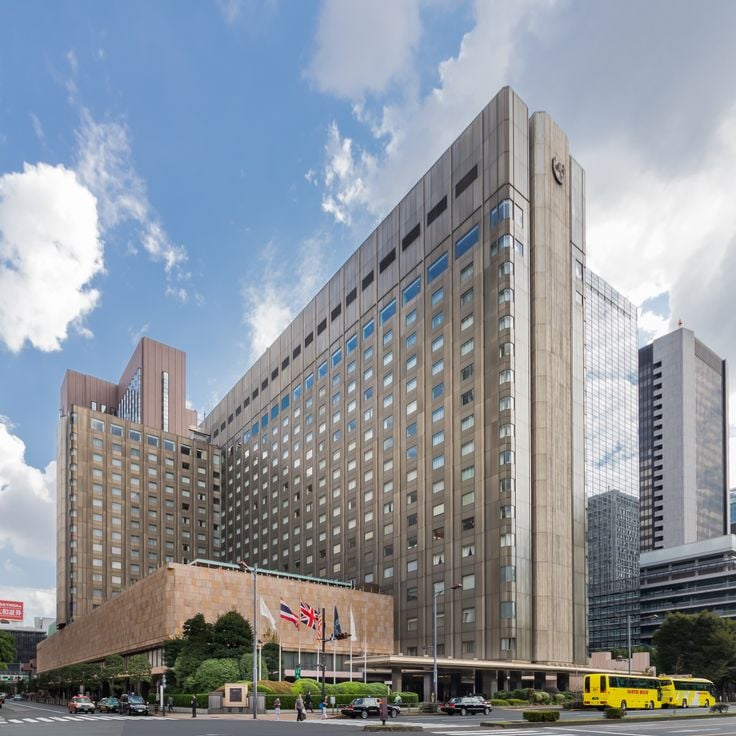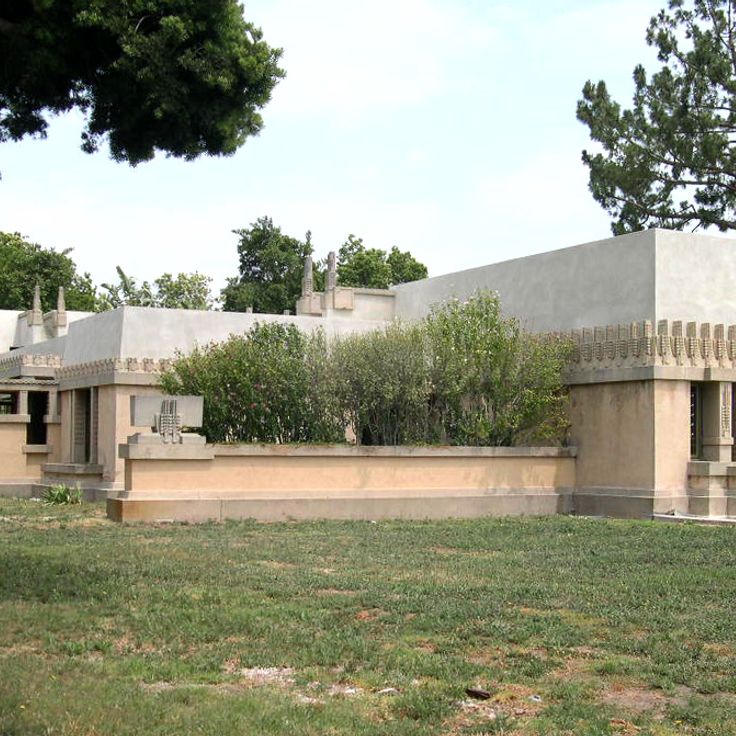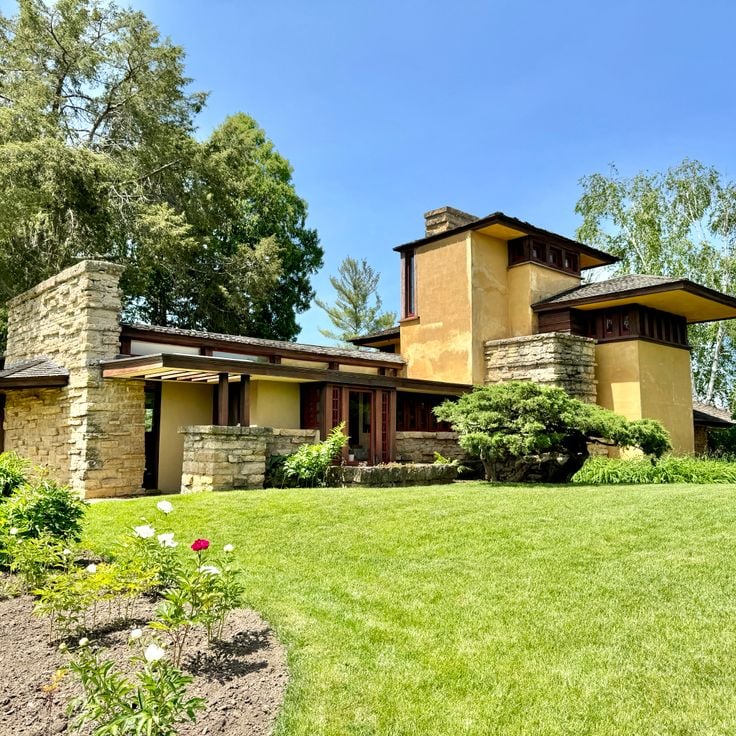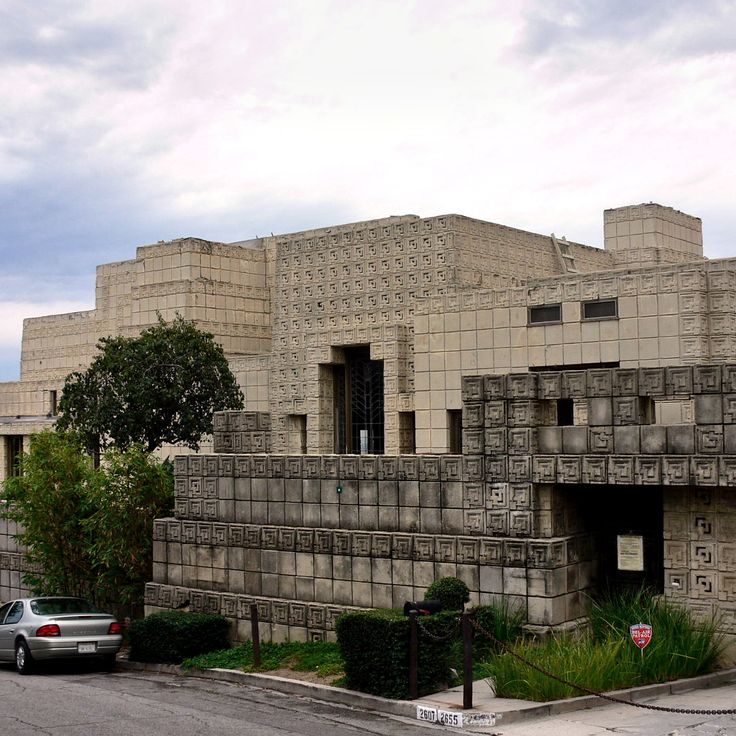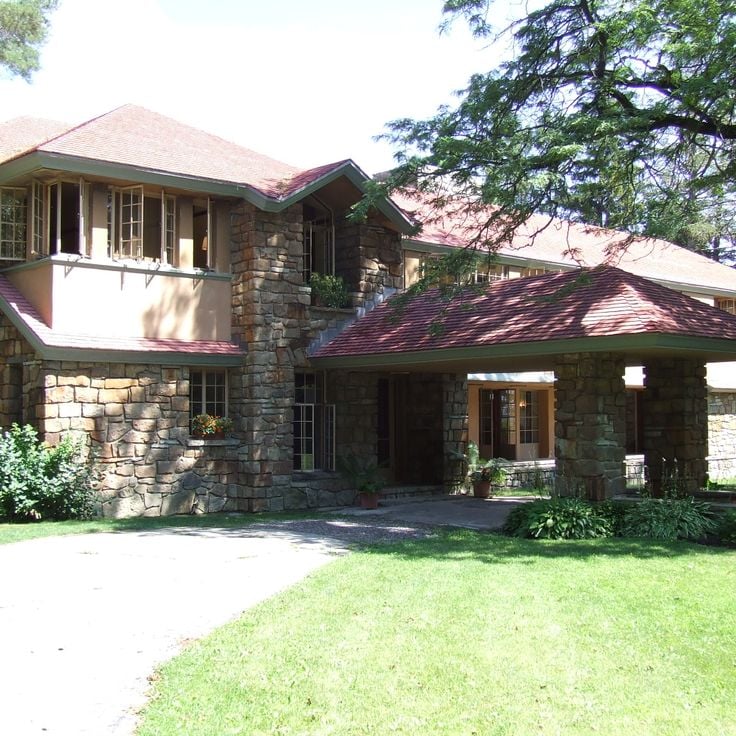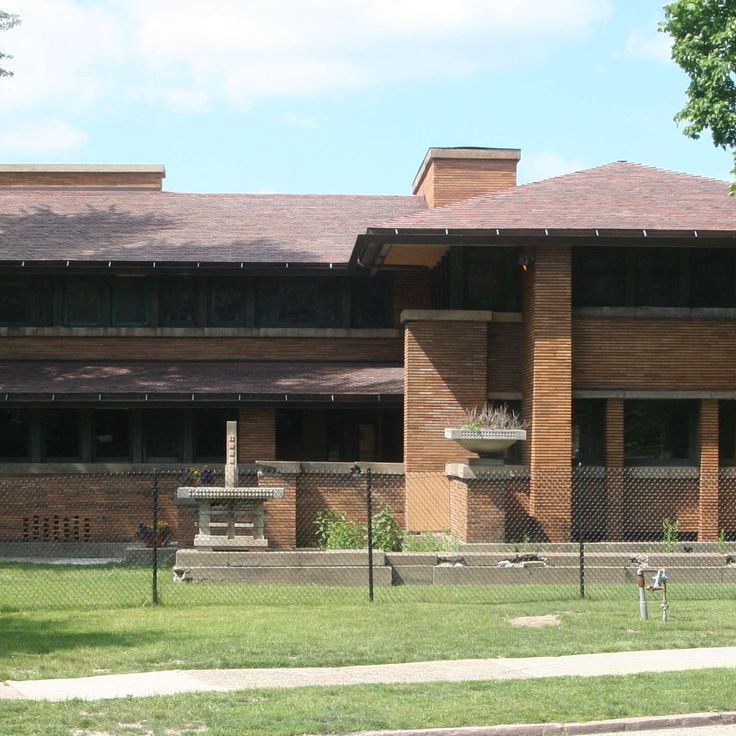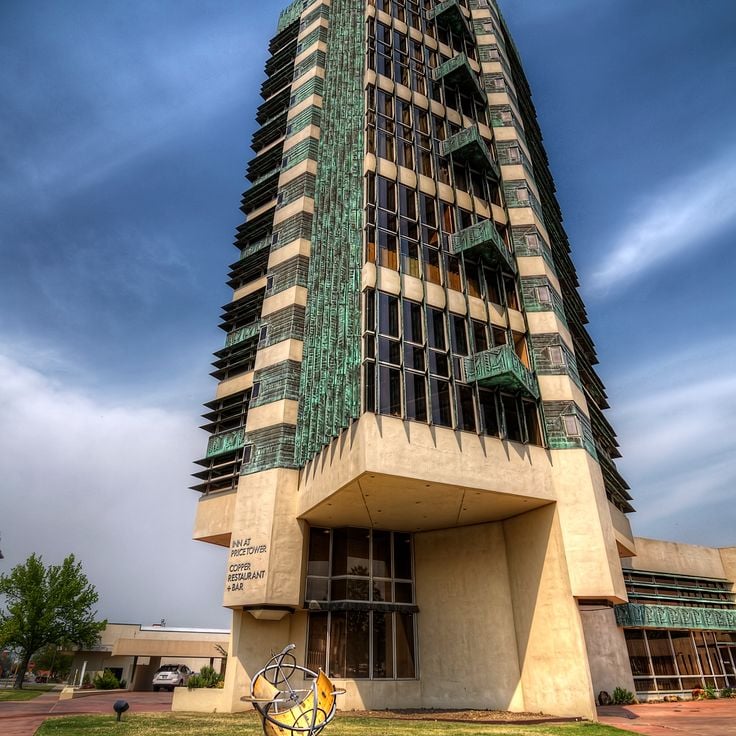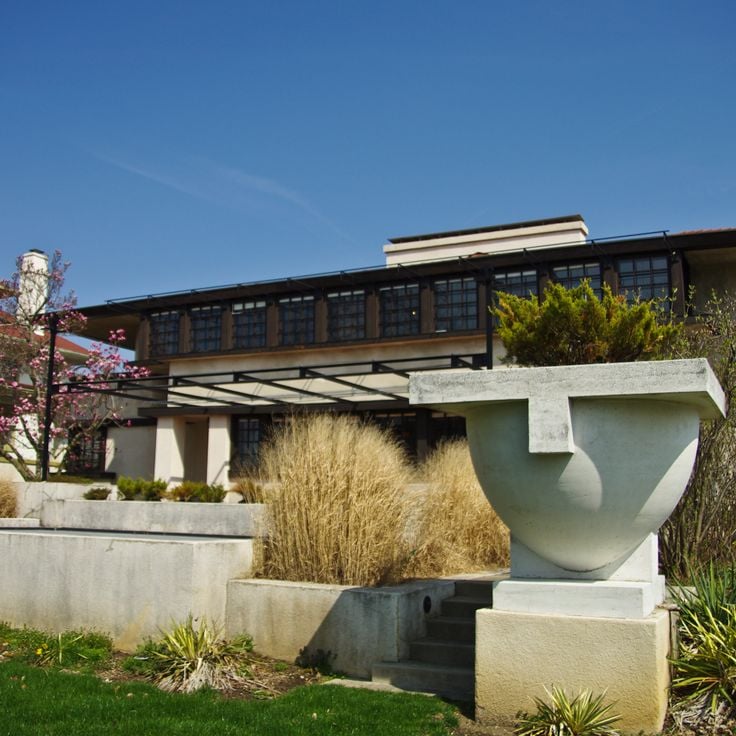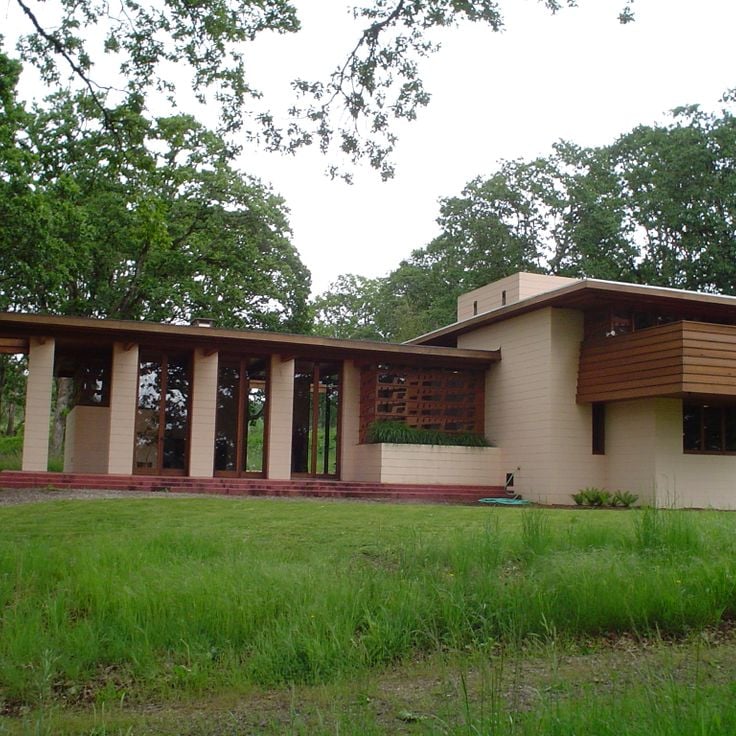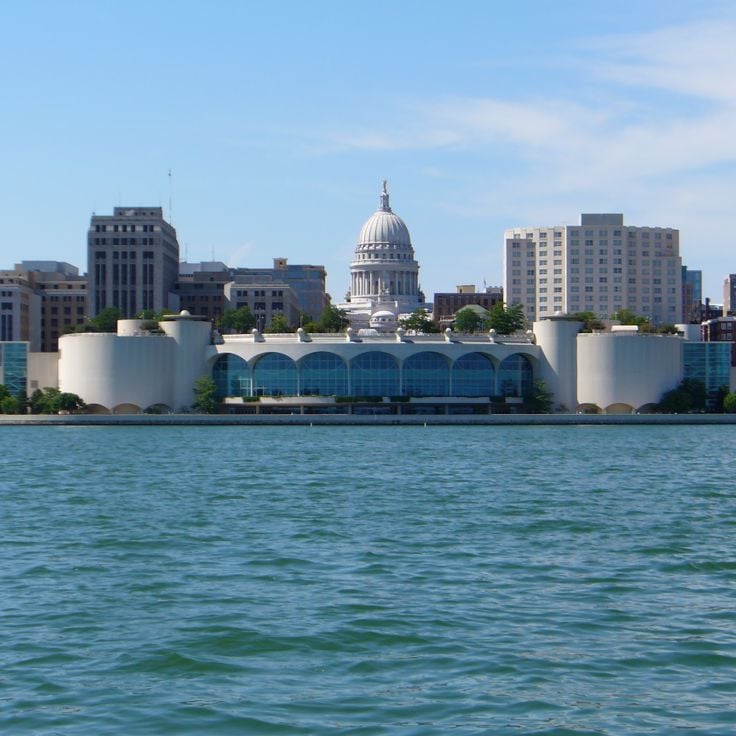Frank Lloyd Wright developed one of the most influential architectural styles of the 20th century over seven decades of practice. His buildings connect interior spaces with surrounding landscapes through horizontal lines, natural materials, and open floor plans. From the Prairie Houses of the Midwest to the post-war Usonian homes, Wright created designs that transformed American residential architecture. His major works include Fallingwater, built over a waterfall in Pennsylvania, the Guggenheim Museum in New York with its spiral ramp, and the Imperial Hotel in Tokyo, which survived the great 1923 earthquake. The Robie House in Chicago demonstrates his Prairie School principles, while Taliesin West in Arizona served as his winter home and architecture school. His structures are located across the United States, Japan, and Europe, demonstrating his vision of organic architecture that works in harmony with nature.
Fallingwater is a 1935 residence designed by Frank Lloyd Wright, constructed directly above a waterfall on Bear Run. The building integrates horizontal concrete cantilevers extending over the stream with vertical sandstone walls sourced from local quarries. Large glass windows connect the interior spaces with the surrounding forest landscape and the flowing water below the structure.
Taliesin West was built in 1937 as Frank Lloyd Wright's winter home and workspace. The building complex now operates as an architecture school and working studio. The construction uses desert rocks, redwood, and canvas to create an organic connection with the Sonoran Desert. The spaces open to the landscape through broad terraces and geometric apertures. Wright developed and expanded the site over 22 years until his death in 1959.
The Solomon R. Guggenheim Museum was completed in 1959 and presents a continuous spiral ramp extending from ground level to the ceiling. The white concrete construction contrasts with the surrounding rectangular buildings on Fifth Avenue. The rotunda allows visitors to view artworks along the ascending ramp while natural light enters through the glass dome.
The Robie House was completed in 1910 as a private residence and demonstrates the principles of Prairie School architecture. The building features pronounced horizontal lines, cantilevered roofs extending beyond the walls, and an open floor plan. The construction combines Roman brick, wood trim, and ribbon windows that allow natural light to enter the interior spaces. The asymmetrical composition and integration with the surrounding landscape demonstrate Wright's philosophy of organic architecture.
The Imperial Hotel was designed by Frank Lloyd Wright in 1923 and represented a major milestone in modern architecture. The building integrated elements of traditional Japanese construction with Western modernist principles. Wright used Oya stone from local quarries and developed an innovative foundation system designed to withstand earthquakes. The hotel complex included multiple buildings featuring characteristic horizontal lines and geometric ornamentation. The original structure was demolished in 1968, with the entrance lobby and portions of the main lobby preserved at the Meiji-Mura Museum.
Unity Temple was completed in 1908 in Oak Park and represents one of the early significant religious buildings constructed with reinforced concrete. The structure displays cubic forms and pronounced horizontal lines. Wright developed an innovative spatial concept with a central assembly room and natural lighting through skylights. The construction uses exposed concrete as a design element and abandons traditional towers or spires.
Hollyhock House was built in 1921 as a residence for oil heiress Aline Barnsdall. The construction employs rectangular concrete blocks and displays geometric patterns of hollyhock flowers across the facades. The building sits on Olive Hill in Los Angeles and connects interior and exterior spaces through terraces and courtyards. The architecture demonstrates Wright's Maya Revival style with horizontal lines and ornamental reliefs.
The Johnson Wax Headquarters was built in 1939 as an administrative building for the wax manufacturing company of the same name. The main hall features slender concrete columns that expand upward into circular discs, resembling tree canopies. These structural elements are connected with glass tubes that channel natural light into the interior space. Wright developed a novel construction method for this project, where the columns support the roof without additional walls. The building was later expanded with a research tower that also reflects Wright's organic architecture principles.
Taliesin is the 290-hectare estate in Spring Green that served as Frank Lloyd Wright's home, architectural office, and school from 1911 until his death in 1959. The complex evolved through multiple reconstructions, particularly after fires in 1914 and 1925. Wright developed his organic architecture here in direct connection with the landscape of the Wisconsin River Valley. The estate includes the main house, studio spaces, farm buildings, and gardens. Taliesin functioned as Wright's primary residence and creative center throughout the later decades of his career.
The Herbert and Katherine Jacobs First House was completed in 1937 in Madison and is recognized as the first Usonian house designed by Frank Lloyd Wright. This residential architecture followed the concept of affordable single-family homes for the American middle class. The building introduced sandwich wall construction with wooden frames and eliminated the basement and garage. The total cost reached $5,500. The house contains approximately 1,600 square feet of living space and features open floor plans, natural lighting, and the integration of indoor and outdoor spaces.
The Ennis House is a residential building from 1924 designed by Frank Lloyd Wright for Charles and Mabel Ennis in Los Angeles. The residence covers 6,000 square feet and was constructed using 27,000 relief-decorated concrete blocks featuring geometric patterns and Mayan architectural motifs. The house stands on a hillside in Los Feliz and represents one of four textile block houses that Wright built in Southern California.
The Graycliff estate was designed by Frank Lloyd Wright in 1927 for the Darwin D. Martin family. The property comprises three buildings spread across 8.5 acres of land along the shore of Lake Erie. Wright created the main house, a guest house, and a garage in his characteristic Prairie Style, featuring horizontal lines and organic integration with the natural surroundings. The estate served as a summer residence and demonstrates Wright's ability to harmonize architecture with the landscape.
The Martin House is a residential complex built between 1903 and 1905 in Buffalo. The estate comprises six interconnected buildings, including the main house, a conservatory, a pergola, a carriage house with stables, and a gardener's cottage. Wright employed horizontal lines, low-pitched roofs, and geometric ornaments in wood and glass. The interiors feature custom-designed furniture and art glass windows that harness natural light. The complex was designed as a residence for Darwin D. Martin.
The Price Tower rises nineteen stories above Bartlesville, representing Frank Lloyd Wright's only realized skyscraper. Completed in 1956, this building combines office and residential spaces within a vertical structure featuring angular geometric forms. The facade displays copper-colored panels alternating with bands of green-tinted windows, demonstrating Wright's organic design principles. Wright originally developed the design for a different project before adapting it for Harold C. Price. The tower's square footprint and cantilevered balconies create its distinctive profile in the Oklahoma landscape.
The Westcott House was designed in 1908 and embodies Frank Lloyd Wright's Prairie School principles through its horizontal emphasis, flat roofs with broad overhangs, and open interior spaces. The residence integrates natural materials including limestone and wood, creating a harmonious connection between indoor and outdoor areas through terraces and geometric gardens. The house features distinctive leaded glass windows, a central living room with fireplace, and carefully designed built-in furnishings. Following extensive restoration, the Westcott House now serves as a museum showcasing Wright's early work in the Prairie School movement.
The Gordon House was completed in 1963 as the only Frank Lloyd Wright-designed building in Oregon. This residence uses his Usonian Automatic concept with prefabricated concrete blocks that allow for modular construction. The house features redwood paneling, large ribbon windows, and a flat roof with broad overhangs. The open floor plan connects interior and exterior spaces through glazed walls that offer views of the surrounding landscape.
Monona Terrace is a convention center located on the shore of Lake Monona. The structure was completed in 1997 based on plans that Frank Lloyd Wright designed in 1938. The building is characterized by its distinctive circular terraces and extensive glass facades that provide views of the lake. The construction took place almost 60 years after the original design and 38 years after Wright's death, while preserving the architectural principles of organic design.
Beth Sholom Synagogue was designed by Frank Lloyd Wright between 1953 and 1959, representing his vision of modern sacred architecture. The building features a pyramidal structure composed of translucent glass panels and aluminum framing, resting on a hexagonal base. The construction rises approximately 100 feet in height and allows natural light to illuminate the interior space. Wright interpreted the concept of Mount Sinai in his design approach. The main sanctuary accommodates over one thousand worshippers. The synagogue has been designated as a National Historic Landmark and continues to serve as an active place of worship for the Jewish community.
Similar collections
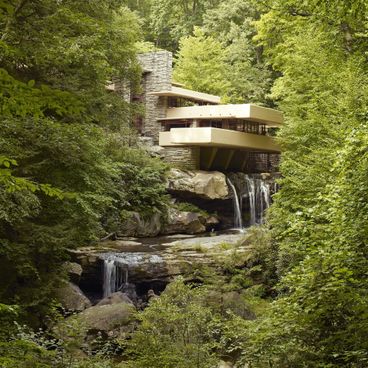
Architecture: famous buildings, modern and historical structures
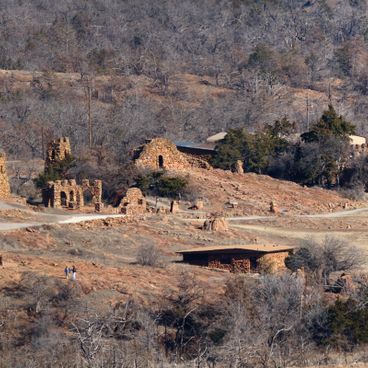
Uncommon places and attractions in Oklahoma
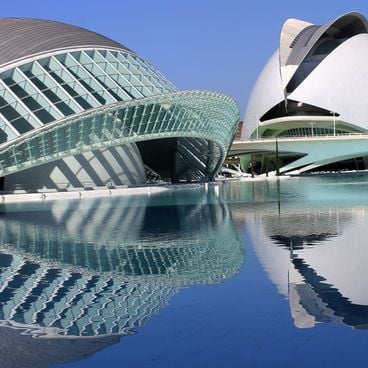
Modern 21st-century architecture: skyscrapers, museums, and landmark buildings
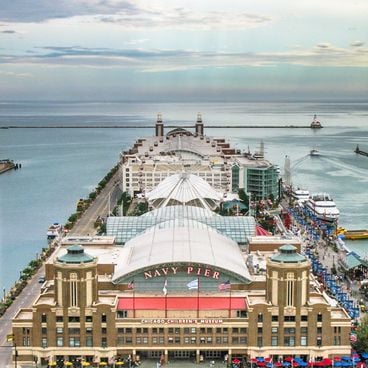
Must-see places in Chicago
